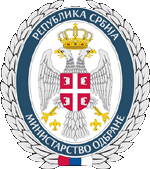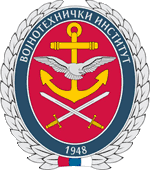|
REPUBLIC OF SERBIA MINISTRY OF DEFENCE
MINISTRY OF DEFENCE Material Resources Sector Defensive Technologies Department
|
comparison of numerically obtained 2D flow fields for the bionic high speed train concept designs inspired with aquatic and flying animals
Institute Gosa, University of Belgrade, Serbia, sumonja@yahoo.com Bosko Rasuo Faculty of Mechanical Engineering, University of Belgrade, Serbia, brasuo@mas.bg.ac.rs Mirko Kozic Military Technical Institute, Belgrade, Serbia, mkozic@open.telekom.rs Vojkan Lucanin Faculty of Mechanical Engineering, University of Belgrade, Serbia, vlucanin@mas.bg.ac.rs MIRJANA PUHARIĆ Innovation Centre of Technology and Metallurgy, University of Belgrade, Serbia, miramo@neobee.net
Abstract: Comparison of numerically obtained flow fields, pressure distributions and streamline allocations, around five 2D bionic high speed train (BHST) models are present in this work. Interest was in examination the possibilities that bio-inspired design gives as a basis for low-drag, energy efficient and aerodynamically silent BHST concept. Japan’s Shinkansen 500 Series was the first brought biomimetic in heavy vehicle applications and approved abilities for environmental protection and drag reduction by design adjustment. Selection of the aquatic and flying animals was under criteria of assumed maximal speeds achieved while catching prey and catching technique, in the natural environment, according to available data. Animals in consideration were kingfisher, dolphin, sailfish, shark and barracuda. Tested BHST configuration consisted of two idealized driving cars connected smoothly on aft-ends, placed in the open railroad surrounding. BHST biomimetic nose smoothly connected with the after-body of the same design represented the train in real scale. Equal and aligned cross sections formed 2D numerical model between domain’s sidewall. Test velocities were 100 km/h, 200 km/h, 300 and 400 km/h. Computational Fluid Dynamic tool in use was the ANSYS Fluent 12. Tritetrahedral mesh, excluding boundary layer, counted up to 10e+06 elements. Introduced inner adapting surfaces covered the BHST and ground with the purpose to control the mesh, from inflation layer to outer space on distance about one third of the BHST length. Boundary condition set for ground was moving wall. Assuming compressible flow that might appear under the BHST bottom, applied turbulent model was two-transport equation model, Standard k-ε, with non-equilibrium wall treatment. Flow field behavior, in result, showed good potentials of explored BHST designs for adoption and further research, as a bio-inspired design basis, over train speeds of 200km/h. Emphasized bio-inspired design was kingfisher-like. Keywords: aerodynamics, bionic, biomimetic, numerical simulation, high speed train.
|
|||||
|
||||||

